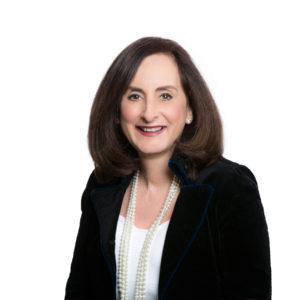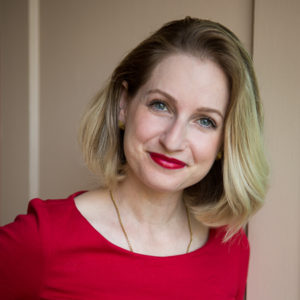The struggle with infertility has been documented since biblical times. And with infertility on the rise – one in six couples require medical intervention – more people are experiencing this specific kind of heartbreak and trauma. To examine how this growing issue feels on the inside, The CJN spoke with a number of people who have dealt with infertility:
Jan Silverman was 26 when she suffered two ectopic pregnancies that rendered her unable to have her own biological child. “Face it,” her doctor told her. “You’re never going to get pregnant.”
Silverman now educates men and women with reproductive challenges. Much has changed since the nightmare that Silverman endured, largely in terms of medical science, but the disappointment and the insensitivity haven’t. (“When are you going to have a baby?”).
“It affects every part of your life and yet you look fine,” says Silverman. “The doctors treated me horrifically in a pivotal, life-changing moment. There was nothing and no one to turn to. That’s when I decided to become an advocate.”
One day she noticed an ad for Resolve, a fertility support group in the U.S. “I thought I had died and gone to heaven. This was me! So I wrote to them in Boston asking if they had a Canadian chapter.”
They didn’t, but thanks to Silverman’s grit, Infertility Support Group, a gathering she founded “for any patients who want to share thoughts, strategies, joys and sorrows related to their family building journey” is marking its 25th anniversary.
Silverman hears it all, third Thursday of every month. “What keeps me in the group process,” she explains, “is that I will never forget the feeling the first time I looked into the eyes of another infertile person and thought, ‘she gets it.’ I don’t have to explain the enormity of how it feels every time I get my period, or of being at a party where the most common question is how many kids do you have.”
Silverman, who decided to adopt and is a mother and grandmother, says the pain recedes but there are still triggers. She places her hands directly in front of her face, totally obscuring it. “Over time, it [infertility] becomes like this,” she says, separating her fingers and allowing the light to penetrate.

• • •
Alyssa would like to be pregnant. Although Alyssa isn’t her real name, she emphasizes that she doesn’t keep her fertility journey a secret from family and friends. Moreover, she thinks it’s something that should be shared and that it’s part of women’s health that has been relegated to secrecy, which makes it harder to bear.
Here’s what she’s going through right now: “For the first couple of months, I just did my own thing, reading online what the best time for sex is, if you’re trying to conceive. I used ovulation sticks and apps like Period Tracker. But I always knew it would be an issue, or thought I knew.
“I had in my head that you don’t go to a doctor until you’ve been trying for a year, but I wanted to do something, so I started seeing a naturopath, who measured my cortisol levels – the stress hormone – and said they were off the charts.… Fertility is stressful. I had acupuncture, tried holistic meditation and reiki.
“My doctor referred me to a fertility clinic. I was amazed. It was like a factory – in a good way. I don’t know what I expected, but I was surprised to see so many people, all different ages, different races, different socio-economic levels. So many women and couples. The waiting room was packed.”
Alyssa ran into an old friend on one of her trips to the clinic. “She turned beet red and asked me not to tell anybody because only her immediate family knew,” Alyssa says.
• • •

Rhonda Levy is the founder of Empowered IVF. Today, she is the mother of 21-year-old fraternal twin sons, who were conceived on her fifth in vitro fertilisation (IVF) attempt. She says that the people she works with “tend to be couples who have had multiple failed IVF cycles and they are desperate to be provided information about clinics that are best equipped to help them.” According to Levy, the fertility clinic system in Canada is shrouded in secrecy. “Although clinics submit their success rates annually to the Canadian Fertility and Andrology Society,” she says, “the public is denied access to individual clinic data. This keeps vulnerable patients in the dark and forces them to roll the dice when choosing a clinic.
“In my opinion, this system, sadly lacking in transparency, rewards mediocrity. Failed IVF cycles generate repeat business, but they cause patients to experience severe pain – emotionally and financially.”
In the U.S., information about the historical performance of fertility clinics is readily available to the public. Many of my Canadian clients are willing to go to there and I provide them with information about American clinics worthy of their consideration. As there are more than 500 fertility clinics in the U.S., patients have to be very careful to choose the right ones. For so many of my clients it has simply been a matter of placing themselves in the most capable hands, as there is a wide disparity in the quality of fertility clinics. So much of this is about the quality of a clinic’s lab.”
• • •
Sarah grew up in Perth, Ont., always knowing that she wanted a family. She met Selena in 2012 and they were married a year later. “We didn’t twiddle our thumbs or linger, enjoying life as a married couple with no kids, because we wanted Sarah’s parents [who were not in good health] to live to see us have a baby,” says Selena.
READ: AMID INFERTILITY HELL, MY WORST ROSH HASHANAH EVER
Sarah had her ovarian reserve tested at a fertility clinic and the result was low, confirming their determination to move forward promptly. Although not expressly discussed at the outset, Selena had always felt that she would be the pregnant one and she carried both pregnancies.
They used an anonymous donor from a sperm bank, a process they describe as “highly mediated.” One of the criteria that figured in their selection process was that the donor agree to meet with the child, if the child chooses to contact him after turning 18. It’s called an “open identity donor.”
They decided to use one of Sarah’s eggs first and one of Selena’s next, with sperm from the same donor, so that there would be a genetic connection between the siblings.
Sarah’s egg was retrieved, the egg was fertilized and five days later, the embryo was transferred into Selena and she got pregnant on the first try. Their first daughter was born in June 2015. Sarah’s dad died during the pregnancy, but her mother lived to see her grandchild.
The second time, because they were using Selena’s egg and womb, they planned to use a treatment called intrauterine insemination (IUI), which is much cheaper and simpler. However, it wasn’t quite so easy getting pregnant the second time. “After the first two tries failed,” Selena says, “I started active monitoring for each cycle, going into the clinic every second day to have blood drawn. I got very good at having my blood drawn. Blood draw hours are between 7 and 9 a.m. People go in before work and the clinic is packed.”
Today, the couple has a busy household. Selena’s melodic voice and Sarah’s deeper even-toned one are punctuated by their five-week-old’s gurgles. They have a three-year-old, as well.
• • •
Aden Seaton of Chelsea, Que., was shocked when she was diagnosed with Hodgkin’s Lymphoma at the age of 28. Although having a baby wasn’t yet on her radar – Seaton and her now-husband Howard Krongold had known each other only six months – she followed medical advice to have her eggs retrieved and stored for possible future use prior to treatment, in case the chemotherapy damaged them. What she recalls of her egg-harvesting process is a waiting room full of really stressed out people.
Seaton was under the care of an Israeli doctor named Hananel Holzer, who she kept in touch with him for many years, when he was working in Montreal. He has since returned to Israel, where he still practices. Today, Seaton and Krongold are the parents to two rambunctious boys, both of whom were conceived naturally.
And those eggs? “I gave them to research last year,” she says.
• • •
Fifteen years ago, three close friends were going through the challenge of infertility, replete with specialist appointments, treatments and huge bills. They came to the collective realization that not everyone could afford the enormous expense. They started an organization called Small Wonders.
Today, the organization distributes grants to qualifying couples for up to 50 per cent of their treatment costs. It also helps couples emotionally, through discussion and in-house support groups for people with primary or secondary infertility. They’re also hoping to start a mens-only support group soon, which a variety of rabbis have wholeheartedly endorsed as being not only needed, but necessary.
Small Wonders executive director Denise Levin says that failed IVF attempts bring up an overwhelming array of emotions, such as fear, worry, sadness, anger, denial and guilt. They also cause people to ask questions, such as, “Why did this happen to me?” and “What did I do wrong?”
“It’s so important that family and friends acknowledge both the emotional and physical needs of a woman experiencing this,” says Levin.
• • •

Petite, fair and quick to smile, Alexandra Sipos-Kocsis believes she literally coached herself to fertility. Although it was only seven years ago, her doctor’s advice was lame.
“She told me to go home and eat walnuts,” says Sipos-Kocsis.
Sipos-Kocsis (who is married to CJN editor Yoni Goldstein) calls it “the lowest point of my life.” Exacerbating matters was the fact that she knew no one who had experienced what she was going through. She couldn’t help wondering why she was going through such turmoil. Yet a “loud and powerful” inner voice told her it was to help other women. She went on to become a fertility coach.
But first, she turned her training on herself. She says that she could feel herself opening up. Her daughter was conceived with the help of a fertility clinic. Her son was born without the help of a fertility clinic when her daughter was 18 months old.
Typically, her clients are in their 40s and already attending a fertility clinic. Sipos-Kocsis gets her clients to focus on the positive, rather than the negative (“I want to be a mother,” versus “I’m not pregnant”). She talks about fertility, rather than infertility. She prefers to work with women in their own homes, but interestingly, many of her clients are international, so she interacts with a lot of them via Skype, FaceTime and WhatsApp.
As much as she believes in being connected to the physical, she has a strong spiritual bent, too. “You can have a perfect embryo that doesn’t necessarily make a child,” she explains. “When a baby is born, there’s that sense that it’s a miracle.”
• • •
A doctor who went through IVF and ended up adopting recalls: “What comes to mind, after all this time, is just how challenging those years were. When you grow up in a Jewish home, family is at the centre of everything you do. From one generation to the next, there’s supposed to be an orderly progression through the life cycle. You grow up, you get married, you have children. That’s what you’re supposed to do.
“If you don’t have children, you feel you don’t belong. Friends, family and even casual acquaintances will ask, ‘When are you going to have children?’ You recognize that they mean well, so you do your best not to make them feel uncomfortable. You smile and say, ‘We’re working on it.’ After a while, most people will figure it out and stop asking.”
• • •
Jon Waldman has a self-effacing sense of humour, evidenced in his Ted Talk, “Swimming Aimlessly: Getting Men to Talk about Infertility.” But while his speech is funny, his message is serious.
Waldman and his wife dated for five years and were engaged for 19 months. He jokes that immediately following their vows, “the question” was popped: when are you going to have a baby? When they finally got pregnant after about a year, they were elated, only to be heartbroken by a miscarriage at 11 weeks.
That is where their fertility journey began. It was a struggle that was much bleaker than they expected. Making matters worse, couples rarely speak of it, and men even less so. Waldman recalls social situations where the women gathered on one side sharing facts about conception, while the men on the other side talked about – you guessed it – sports.
With their infertility labelled as unexplained, Waldman felt anger, along with a sense of shortcoming. He shut down. At his ultimate low, he sought counselling and anti-depressants, though they couldn’t help solve the underlying issue, which he emphasizes “does not go away.”
He recalls avoiding social situations, like children’s birthday parties, where people would make comments like, “You better catch up!” Well-intentioned words, but they landed like a punch in the gut. Waldman would like couples going through infertility to know that there is support available, and he encourages them to talk about it. He’d like everybody else to think before they speak. To those who question the cost and effort of going through IVF, he asks, “Would you question someone who was spending money on cancer treatment?”
The couple tried acupuncture, fertility drugs, IUI and IVF, and started to investigate adoption opportunities. They left the Winnipeg clinic where they began treatment unsatisfied and frustrated and took a road trip across the country to a clinic in Victoria. There, after trying to conceive for six years, they finally succeeded. Their daughter, Kaia, was born in 2015.






